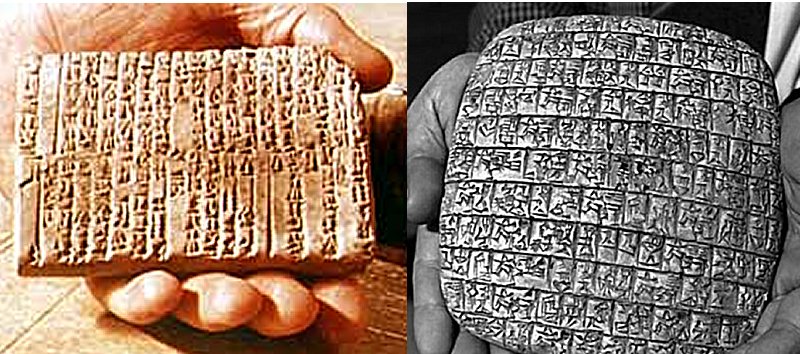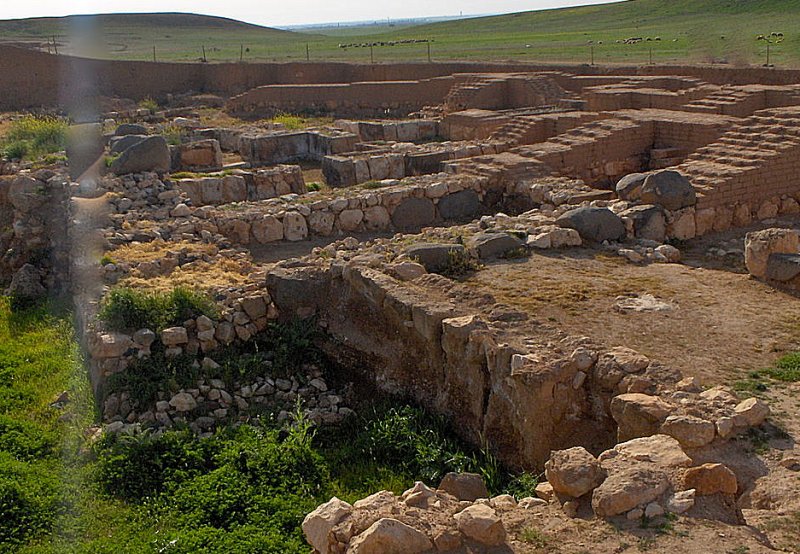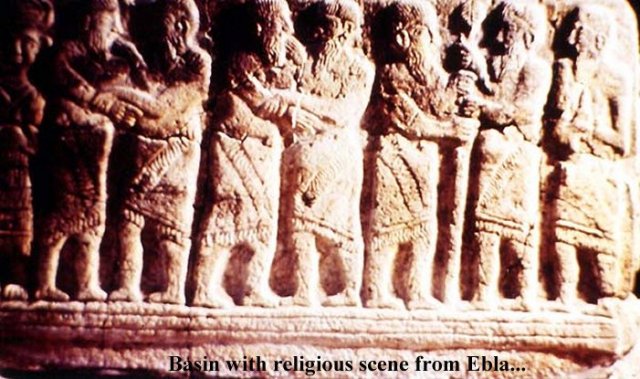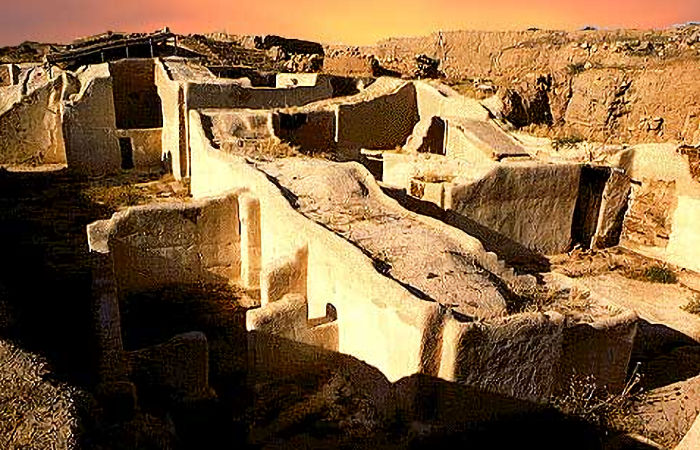Mysterious Ancient City Of Ebla That Existed Thousand Years Before Biblical Kings David And Solomon
A. Sutherland - AncientPages.com - The mysterious ancient city of Ebla ("White Rock") existed a thousand years before the biblical time of Kings David and Solomon. The Assyrians, led by Sargon of Akkad's grandson Naram-Sin (ca. 2240 BC), destroyed Ebla by putting it to the torch.
The fire destroyed the city and then followed 250 years of impoverishment, after which the Amorites, who dominated Mesopotamia, Palestine, and Syria during the period from about 2000 to 1600 BC., sacked Ebla and established their own dynasty.
Ancient Ebla tablets. Credit: Wikimedia Commons
The Amorites rebuilt the palace and a temple, and a statue representing one of their kings but only limited prosperity returned to the city, which slowly renewed relations with Egypt, which is based on a decorated bone scepter of the Egyptian king Ḥtp-ib-Re (reigned c. 1750 BC) unearthed at the site of excavated Ebla.
Until today, no one would have known about Ebla if it hadn’t been for an out of sight, almost missed notice in the ancient record made in Assyrian and Akkadian records concerning its fall.
The vizier palace - in the ancient city of Ebla. Image credit: Mappo - CC BY-SA 4.0
Inspired by this historical notice, a team of archaeologists led by Dr. Paolo Matthiae, professor of Near East Archaeology at the University of Rome began to excavate Tell Mardikh and a neighboring mound ('tell', in Arabic and 'tel', in Hebrew), located about 33 miles (55 km) southwest of Aleppo, in northwestern Syria.
In 1969, it was the first time the ancient Ebla was recognized, and excavations that uncovered a remarkable royal archive revealed Ebla's importance.
First occupied in 4,000 BC, it had its period of power and wealth in the mid-3,000 BC. It maintained trade relations with Mesopotamia, Egypt, Sumer, and Iran, especially with the ancient city of Kish (the Bible calls Kush).
Ebla had about 250,000 inhabitants - skilled craftsmen in metals, textiles, ceramics, and woodwork - and was administered by a large bureaucracy, according to the ancient royal archive unearthed in 1975 and consisting of 15,000 clay tablets inscribed in cuneiform script and some written in a previously unknown language - now termed Eblaite.
The tablets were found carefully stacked on wooden shelves, which unfortunately had collapsed due to the palace's destruction.
Ebla, which was destroyed by fire and rebuilt several times, existed until about 1600 BC. The evidence indicates yet another destruction by fire, but the place was abandoned this time. Ebla has remained totally deserted except for a small group of monks who lived there temporarily during the Roman or Byzantine time.
Many deciphered tablets inform that the kingdom had trade relations with Megiddo, Byblos, Sidon, Akko, Gaza, Jerusalem, and the Biblical Hazor, the largest biblical-era site in Israel, known as "the head of all those kingdoms".
"Tablet 1860 names the five cities of Genesis 14:2 in the same order, i.e., Sodom, Gomorrah, Admah, Zeboiim and Zoar..." and predates the great catastrophe involving the Prophet Lot and the areas of Sodom and Gomorrah which were destroyed."
"...And Joshua at that time turned back, and took Hazor, and smote the king thereof with the sword: for Hazor beforetime was the head of all those kingdoms..." (Joshua 11:10). Ruins of the royal palace, in Ebla, Syria. Credit: Wikimedia Commons - CC BY-SA 3.0
On the tablets of Ebla are included:
'very early Canaanite creation and flood stories which very closely resemble that of the Bible..." (D. Rohl, "A Test of Time") and the names of prophets known from the holy scriptures like Ab-ra-mu (Abraham), E-sa-um (Esau), Ish-ma-ilu (Ishmael), even Is-ra-ilu (Israel), and those from later periods, like Da-'u'dum (David) and Sa-'u-lum (Saul). Other texts describe Ebrum, the third and greatest of the six kings of the Ebla dynasty between 2400 and 2250 BC.'
Ebrum was placed on the mighty throne of Ebla by Sargon the Great of Akkad or "Righteous Ruler", who was a close associate of the Sumerian goddess Inanna (Ishtar) known as the "Lady of the battlefield."
Updated on May 13, 2022
Written by A. Sutherland - AncientPages.com Staff Writer
Copyright © AncientPages.com All rights reserved. This material may not be published, broadcast, rewritten or redistributed in whole or part without the express written permission of AncientPages.com
More From Ancient Pages
-
 Was Pocahontas A Real Historical Person?
Featured Stories | Feb 20, 2019
Was Pocahontas A Real Historical Person?
Featured Stories | Feb 20, 2019 -
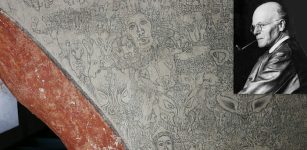 Mystery Of The Demon Wall In Sauherad Church Finally Solved
Archaeology | Dec 15, 2021
Mystery Of The Demon Wall In Sauherad Church Finally Solved
Archaeology | Dec 15, 2021 -
 Mama Pacha: Respected And Feared Supreme Goddess Of The Andean People
Featured Stories | Jul 23, 2020
Mama Pacha: Respected And Feared Supreme Goddess Of The Andean People
Featured Stories | Jul 23, 2020 -
 European Dogs Doubled In Size From 8,000 To 2,000 Years Ago – New Study Shows
Archaeology | Jun 3, 2022
European Dogs Doubled In Size From 8,000 To 2,000 Years Ago – New Study Shows
Archaeology | Jun 3, 2022 -
 Jesus Christ’s Tomb Dates To Roman Emperor Constantine’s Era – Researchers Confirm
Archaeology | Dec 12, 2017
Jesus Christ’s Tomb Dates To Roman Emperor Constantine’s Era – Researchers Confirm
Archaeology | Dec 12, 2017 -
 Windover Pond – Remarkable 8,000-Year-Old Underwater Cemetery In North America
Archaeology | Dec 28, 2014
Windover Pond – Remarkable 8,000-Year-Old Underwater Cemetery In North America
Archaeology | Dec 28, 2014 -
 Rare 2,800-Year-Old Assyrian Scarab Amulet Found In Lower Galilee
Archaeology | Feb 24, 2024
Rare 2,800-Year-Old Assyrian Scarab Amulet Found In Lower Galilee
Archaeology | Feb 24, 2024 -
 Ancient Secrets Of Sacred Lismore – Is There A ‘Second’ Iona In Scotland?
Archaeology | Jul 4, 2017
Ancient Secrets Of Sacred Lismore – Is There A ‘Second’ Iona In Scotland?
Archaeology | Jul 4, 2017 -
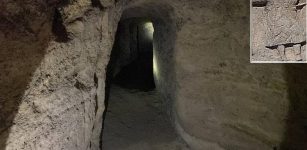 The 5,500-Year-Old Underground Rock Settlement With Illuminated Galleries In Ancient City Of Hadrianopolis, Turkey
Archaeology | Sep 18, 2023
The 5,500-Year-Old Underground Rock Settlement With Illuminated Galleries In Ancient City Of Hadrianopolis, Turkey
Archaeology | Sep 18, 2023 -
 The Boomerang Was Used 20,000 Years Ago By Stone Age People
Ancient History Facts | Sep 28, 2018
The Boomerang Was Used 20,000 Years Ago By Stone Age People
Ancient History Facts | Sep 28, 2018 -
 5 Traces Of Ancient Ancestors That Still Exist In All Human Bodies Today
Featured Stories | Jan 23, 2023
5 Traces Of Ancient Ancestors That Still Exist In All Human Bodies Today
Featured Stories | Jan 23, 2023 -
 Enigmatic Green Lady In British Folklore
Featured Stories | Jan 9, 2017
Enigmatic Green Lady In British Folklore
Featured Stories | Jan 9, 2017 -
 Unique 1,000-Year-Old Medieval Golden Treasure Unearthed By Dutch Historian Using Metal Detector
Archaeology | Mar 24, 2023
Unique 1,000-Year-Old Medieval Golden Treasure Unearthed By Dutch Historian Using Metal Detector
Archaeology | Mar 24, 2023 -
 Vetala – Vampire With Knowledge Of The Past, Present And Future In Hindu Mythology
Featured Stories | Jan 19, 2021
Vetala – Vampire With Knowledge Of The Past, Present And Future In Hindu Mythology
Featured Stories | Jan 19, 2021 -
 5 Most Common Misunderstandings About Evolution
Evolution | Jun 5, 2023
5 Most Common Misunderstandings About Evolution
Evolution | Jun 5, 2023 -
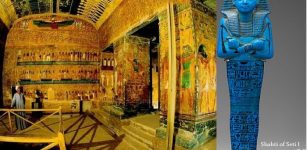 Ushabti: Servants Who Worked For Their Owners In Afterlife In Ancient Egyptian Beliefs
Ancient History Facts | Feb 12, 2020
Ushabti: Servants Who Worked For Their Owners In Afterlife In Ancient Egyptian Beliefs
Ancient History Facts | Feb 12, 2020 -
 Legacy Of The Iconic Sycamore Gap Tree – Historical Landmark At Hadrian’s Wall
Featured Stories | Mar 28, 2024
Legacy Of The Iconic Sycamore Gap Tree – Historical Landmark At Hadrian’s Wall
Featured Stories | Mar 28, 2024 -
 Suprising Evolution Discovery – Human Temporal Lobes Are Not Very Large In Comparison With Other Primates
Archaeology | Mar 21, 2023
Suprising Evolution Discovery – Human Temporal Lobes Are Not Very Large In Comparison With Other Primates
Archaeology | Mar 21, 2023 -
 Easter Island’s Society Was Sophisticated And Its People Shared Information And Collaborated
Archaeology | Aug 14, 2018
Easter Island’s Society Was Sophisticated And Its People Shared Information And Collaborated
Archaeology | Aug 14, 2018 -
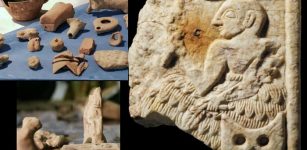 Hundreds Of Thousands Of Sumerian Artifacts Have Been Stolen From Iraq’s Museums And Archaeological Sites
Artifacts | Dec 7, 2020
Hundreds Of Thousands Of Sumerian Artifacts Have Been Stolen From Iraq’s Museums And Archaeological Sites
Artifacts | Dec 7, 2020

